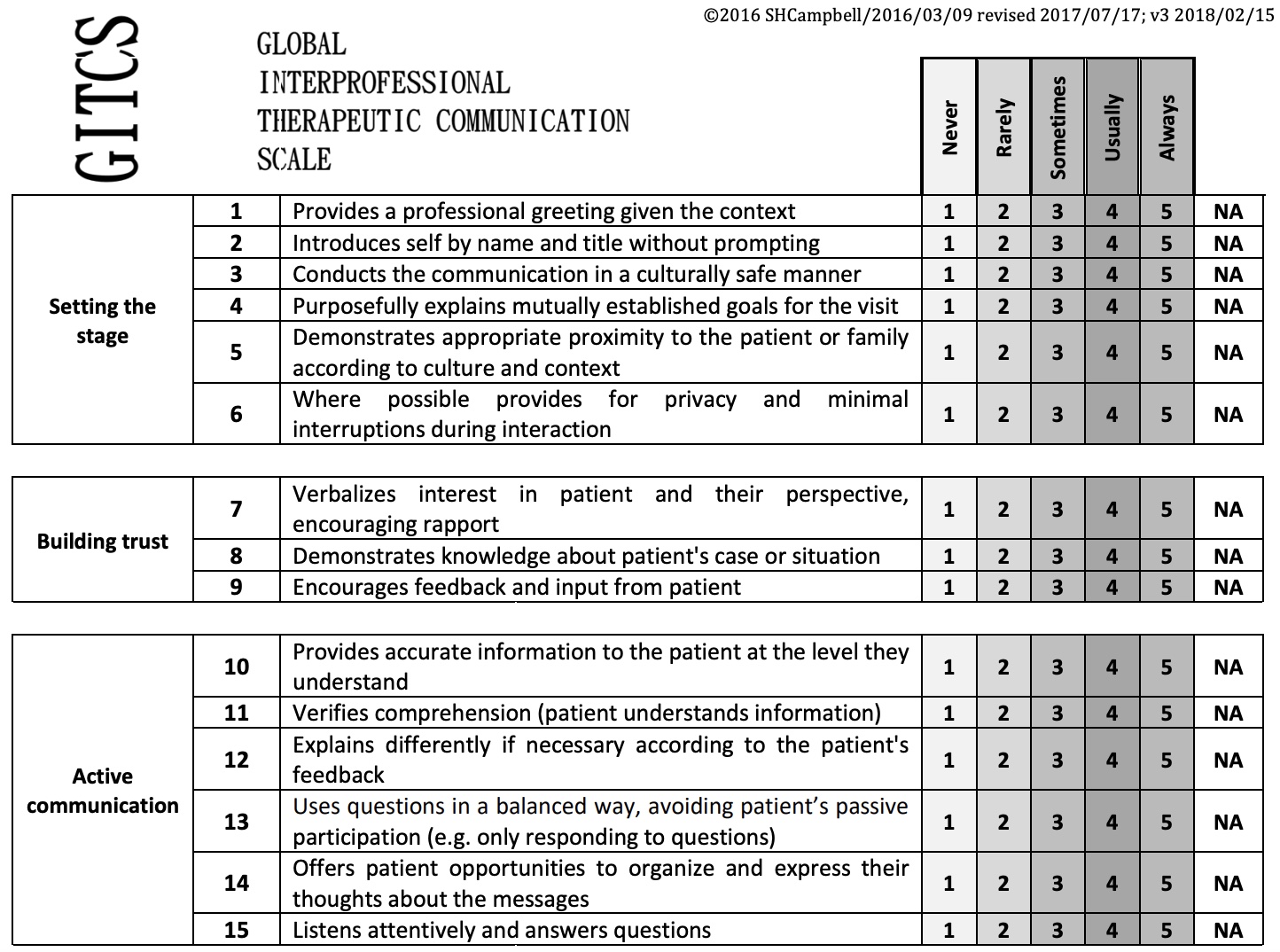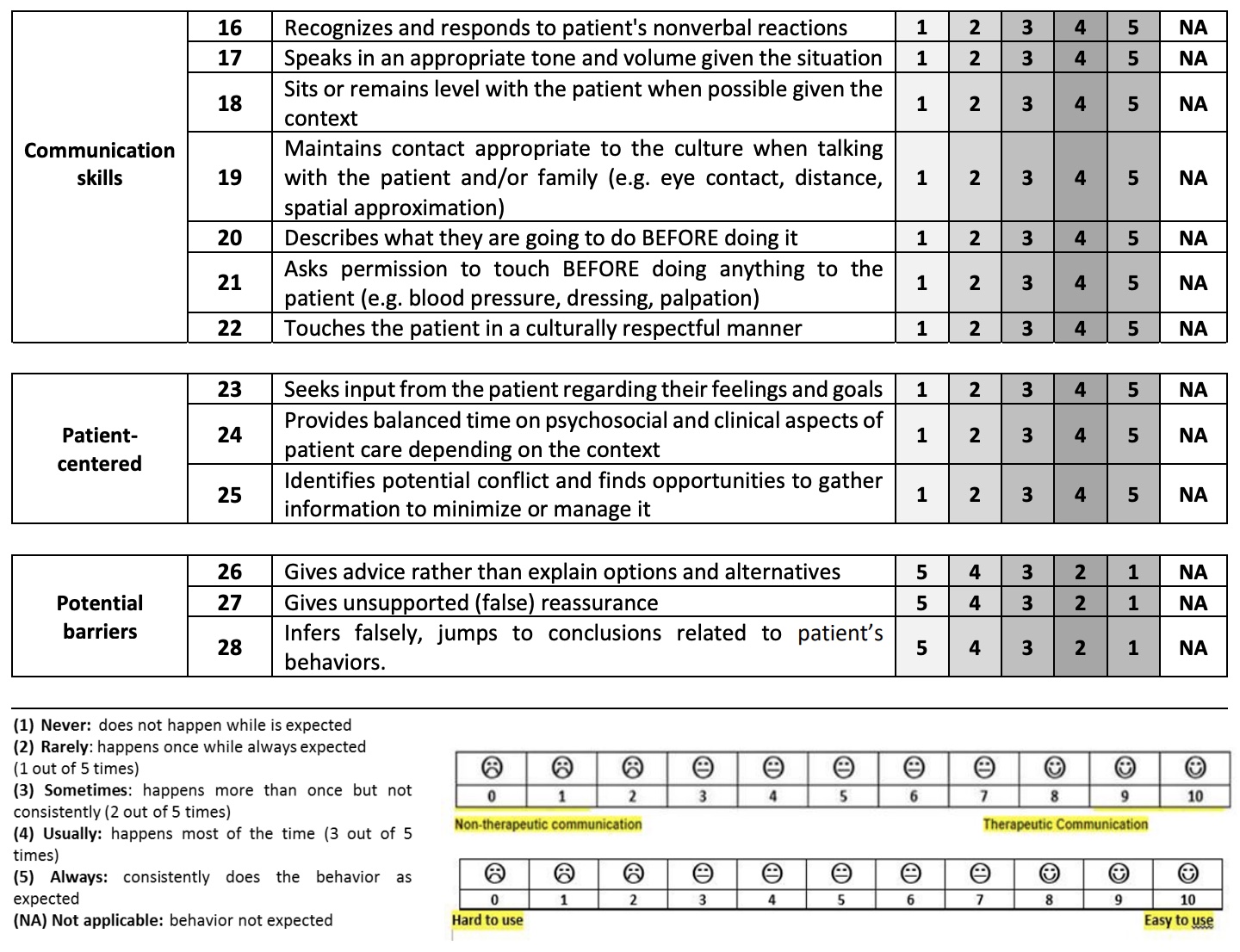Introduction to the Scale
This section introduces participants to the elements of GITCS© related to client-patient-provider communication and provides an understanding of how best to use the scale as an instrument/tool to assess client-patient-provider communication for multiple disciplines.
GITCS© was developed and validated to provide to educators and students a robust instrument to assess and guide the education about therapeutic communication (Campbell & Aredes, 2019; Campbell et al., 2022). Communication is a core competence for all health and social care professionals and performing it therapeutically is crucial to evolve the quality of health and social care. But, what does therapeutic communication mean?
High quality communication requires health and social care professionals to: have empathy, promote active listening, and give feedback to clients-patients in order to establish a therapeutic relationship (Granados-Gámez et al. 2021). The skills and behaviors expected from these professionals must be supported by theoretical foundations, such as a humanistic and client-patient-centered perspective, where power is shared and mutual understanding is promoted along the way, from prevention and treatment, to health promotion and rehabilitation.
Communication is required and inherent in human relationship development, and yet, many gaps exist in the process of interacting with others. There is a risk for implicit bias, hierarchical social dynamics, and misunderstanding related to multiple barriers including language and culture. In the healthcare environment, communication can impact client-patient safety, financial costs, adherence to treatment and public perception of the healthcare system and healthcare professionals. Given the important role of health and social care providers in society, strengthening one’s ability to communicate effectively is paramount for health. To guarantee better results in this matter, it is necessary to strengthen therapeutic communication education from undergraduate courses to everyday continuing education.
When the GITCS© was created, theoretical underpinnings and previous research on health communication guided the creation of an instrument that follows the flow of an interaction. [See Figure 1 – Global Interprofessional Therapeutic Communication Scale (GITCS©)].
Setting the Stage ~Building Trust ~ Active Communication

Communication Skills ~ Patient-Centred ~ Potential Barriers

Access Links to all GITCS© Resources
Link to GITCS© [download a pdf from ResearchGate]
https://www.researchgate.net/publication/331535581_GITCSC_28-item_Scale
PI Website for GITCS© Scale
https://nursing-sim.sites.olt.ubc.ca/communication-gitcs/gitcs-scale/
Communication Resources – PI Website:
https://nursing-sim.sites.olt.ubc.ca/communication-gitcs/communication-tool-resources/
Instructions for use: (Link)
Basic Instructions for use of GITCS© Global Interprofessional Therapeutic Communication Scale (GITCS©) 2016 SHCampbell/2016/03/09 revised 2017/07/17
Media Attributions
- GITCS Scale Part 1
- GITCS Scale Part 2

